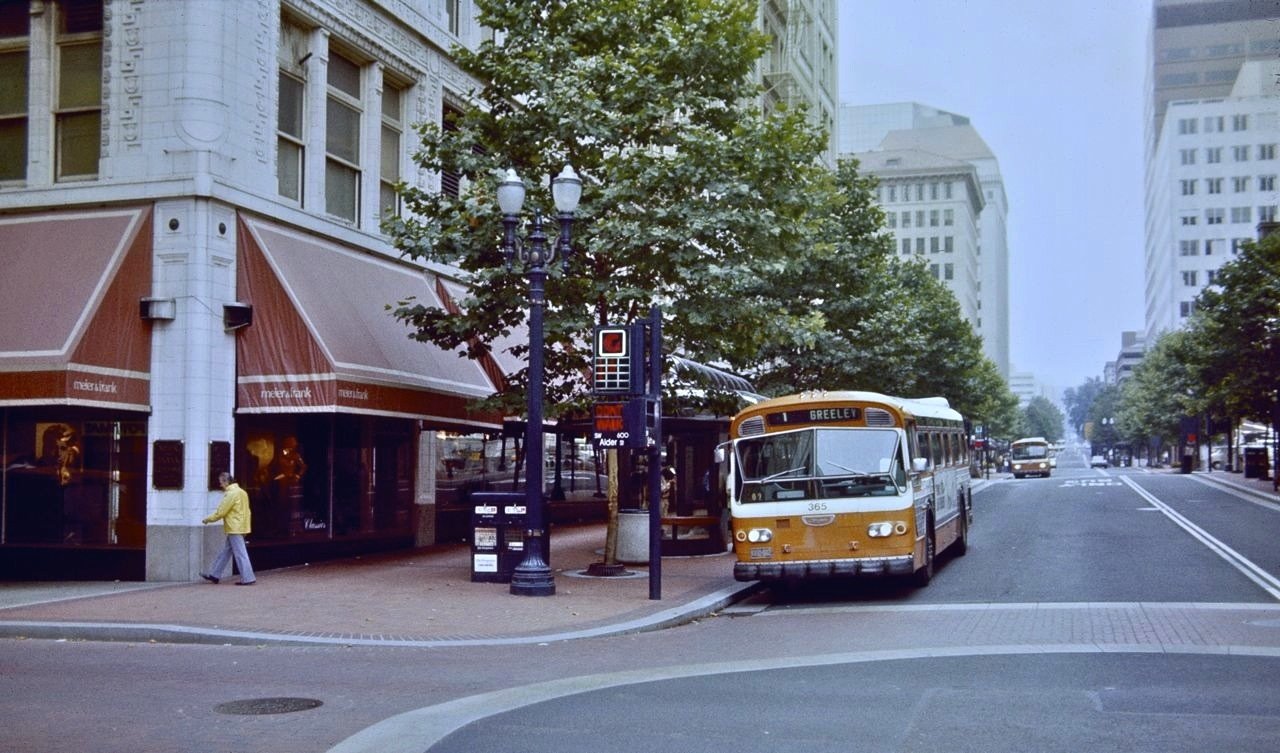by Gary A Smith, CPIM-F, CSCP-F, CLTD-F
“Balance the cost of the soul you lost / With the dreams you lightly sold” - Dan Fogelberg
There was once a time when brick and mortar department stores ruled the retail landscape. Many remember the national chains, mass retailers that included J.C. Penney, Sears Roebuck, and probably to a lesser degree, Montgomery Wards. Both Wards and Sears initially made their names as mail order retailers however, like J.C. Penney, they grew quickly and expanded rapidly across the United States.
The crown jewels of department stores, however, were the regional stores that started in major cities and larger towns. New York had Macy’s, Bloomingdales, Lord & Taylor, Gimbels, and Abraham & Strauss, among others. Boston had Jordan Marsh and Filene’s. Chicago had Marshall Fields and Carson Pirie Scott, while Atlanta had Rich’s and Davison’s. Portland, Oregon had Meier & Frank, and Miami had Burdine’s. Lazarus started in Columbus, Ohio, while St. Louis was the home of the May Company. Dallas had Neiman Marcus, and Los Angeles had Bullocks. These were just a few, but all were important to the growth and development of retail. Nearly all started with a downtown location, and those that survived the Great Depression expanded into the suburbs and regionally after World War II.
Americans once looked forward to their shopping trips to these stores because it was an event. It was not uncommon to see men, women and children dressed up to go shopping. It meant a trip downtown or to one of the regional malls that were sprouting up like dandelions across the landscape. People could buy virtually everything at these stores including apparel and shoes to furniture, appliances, kitchenware, sporting goods, and linen. Department stores were also a source of entertainment. Among the many activities for customers were cooking demonstrations, record listening rooms (try before you buy), sewing, dance, and gardening classes, and places for children to play. Some even had charm schools and nearly all had one or more excellent restaurants or tea rooms for dining and relaxing.
As the post-war economy grew, the regional department stores grew from single to multiple locations, becoming chains themselves. However, a unique aspect of the regional department stores, unlike the national mass marketers, was that they catered to local tastes. Many department managers were also buyers, responsible for the profitability of their departments. Entrepreneurialism was encouraged and competition was keen so many department stores also carried high fashion men’s and women’s clothes. To deal with the northern winters, men’s suits were always a heavier weight at stores located in the northern states such as Marshall Fields in Chicago and Jordan Marsh in Boston, while Rich’s and Davison’s in Atlanta and Burdine’s in Florida carried lighter weight and fabrics and colors for their area’s milder weather. When visiting my grandparents in Portland Oregon in the 1960’s and 70’s, I remember browsing Meier & Frank’s Stetson hat department, something I had never seen before coming from the Midwest. I even tried on more than a few real cowboy hats.
Regional department stores formed the heart of many of their communities. They saw themselves as an integral part of the town or city where they were located and realized that the success of their business was tied to the success of the community and thus many took a long-term view of such things as profit and growth. When the city did well so did the stores, when there was a crisis, they helped their communities. They extended credit to customers, and they started the first credit unions for their employees. Although most department stores were started by entrepreneurs, many of them recognized talent and brought promising non-family members into the business who shared their ideals. These retailers understood the value of long-term employment and loyalty and placed a high value on it.
But a sea change gradually occurred in department store retailing. The larger regional chains, after outgrowing their entrepreneurial roots, began to bring in professional managers who then changed their store’s competitive strategy. Instead of expanding into new territories and competing with other regional chains head-to-head, they began buying the competition. By the end of the 20th century there were three mega department store chains; Federated Department Stores first formed in 1929, R.H. Macy, and The May Company. Long-term strategic thinking was replaced by a focus on quarterly growth and profits.
Once consolidation began, department stores began to follow the basic rule of mergers; they consolidated their supply chains, and information systems to gain economies of scale. Soon these stores, all of whom once had individual identities and cultures, began to resemble one another. Culture wars were won and lost. Like the consolidation of the design and buying departments of General Motors in the 1970’s, soon one could no longer tell one retailer from another anymore than you could a Pontiac from a Buick. Only the logos were different. When Federated bought The May Company in 2005 its total department stores nationwide ballooned to 960. Then in 2007 Federated changed its name to Macy’s and all its stores, all those unique and innovative regional department store names were lost to history. Gone were such names as Filene’s, Woodward & Lothrop, Hecht’s, Famous-Barr, Lazarus, Strawbridge & Clothier, and Marshall Fields. Macy’s became the McDonald’s of department stores; customers could go to any store across the country and buy the same items. Loyalty and innovation were replaced by convenience and quarterly earnings.
The post-Covid world has also not been kind to retailers, especially those that remained focused on physical, brick and mortar (B&M) outlets. Each day it seems that another one has filed for bankruptcy. Although Montgomery Ward and Sears gave up the ghost prior to the Covid era, JC Penney is currently on life support in both brick and mortar and catalog divisions. Even Macy’s has gone through some rough times. Between the Great Recession and Covid Macy’s has shrunk to 508 locations nationwide, nearly the same number of stores it had two decades before the merger. It has found some success with multi-channel distribution and marketing but will close four stores in the first quarter of 2023.
So, what happened? In a word, change happened. Much of the change was evolutionary, and some of it was revolutionary. Change causes disruption within an organization. The fact is that all organizations face change; it’s how they deal with the change that separates the leaders from the laggards. The great department stores of the past and present focus on people, community, and relationships realized in their ideals and vision. Great organizations treat their customers, employees, suppliers, and all stakeholders as family. What benefits the family benefits the organization. Organizations, like families, need to grow to survive. No organization ever shrinks its way to greatness. But to grow it must also change but change for the benefit of the entire organization (i.e., the family) and not to the exclusive benefit of any one group. Supply chains are key to the success of retail organizations.
The day of the traditional regional department store is gone; it will never be seen again. But brick and mortar retailing does have a future. If retailers focus on what is good for the organization as a whole and invest in people, technology, and continuous improvement, retailing in all its forms has a place in our economy.
Gary welcomes your comments and feedback. You can email him at garys@supplychainmavens.net.

